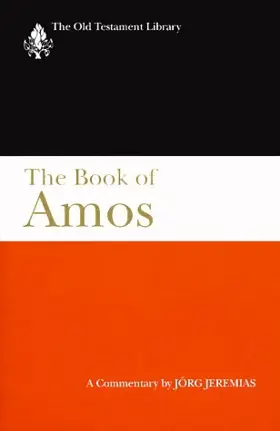

The Book of Amos
Pages
177
Publisher
Westminster John Knox
Published
1/1/1998
ISBN-13
9780664220860
Reviews
Creative critical reconstruction of text that tries to reflect literary sensibilities.
[Full Review]
Louisville, Kentucky: Westminster John Knox Press, 1998. Pp. xix + 177, Cloth, $27.95, ISBN 066422086X. James Linville University of Alberta Edmonton, AB Canada T6G 2E6 This is a translation of J.'s Der Prophet Amos (Das Alte Testament Deutsche; Göttingen: Vandenhoek & Ruprecht, 1995). No new preface was written especially for the English edition, and no translator's foreword is supplied. In this concise study, J. describes even the earliest edition of Amos as an artistic accomplishment and not a simple preservation of the prophet's words. He proposes that the book was composed in a number of stages, but also claims that its exilic and post-exilic transmission-history is the true point of departure for exegesis. Even so, J. begins with an admittedly hypothetical study of the historical prophet. J. accords him the familiar date of between 760-750 BCE and infers that the reference to "two years before the earthquake" (1:2) shows that he prophesied for only a year or so. Although Amos himself may have written down some of his own words, the first real edition of a book of Amos only followed the fall of Samaria. It was considerably expanded in the time of Jeremiah, although its constitutive formation was not until the exilic - early post-exilic periods. The process saw Amos' critique of the northern kingdom adopted pars pro toto as a critique of the Israelite people as a whole. The final form of the book, which is late post-exilic, saw Amos' harsh message reconciled with older views of salvation. Many, but not all of these ideas supporting this schema can be found in other treatments of Amos. The structural analysis and the acknowledgment that the composite nature of the chapters does not undermine their present literary unity are the strongest aspects of J.'s work.
[Full Review]


